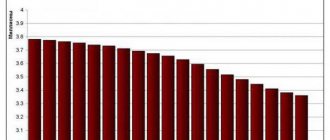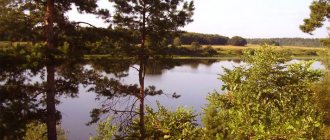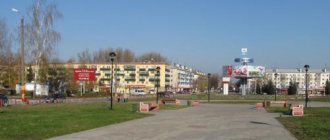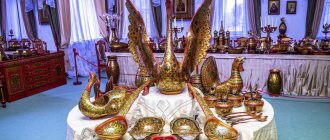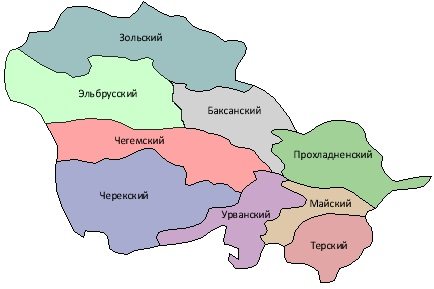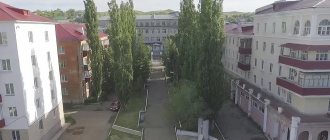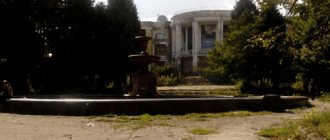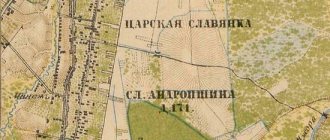History of the development of the settlement
Teacher of Makaryevskaya secondary school, honorary citizen c. Makarieva, local historian Pchelin, Evgeniy Petrovich believes that Lyskov’s foundation has 3 theories:
1. The founding date of the Lyskovo settlement is considered to be 1371.
This is evidenced by the actions of the trade guest Taras Petrov, who “bought six villages from the Grand Duke on the Sundovik River...”, which is confirmed by the results of field research by archaeologist V.F. Chernikov, which date back to the second half of the 14th century.
2. The founding date of the settlement of Lyskovo is considered to be 1410
, according to the chronicle of this time - a letter of grant from Prince Daniil Borisovich of Nizhny Novgorod to the Annunciation Monastery, which states that the vacant lot on Lyskovo was donated to the monastery this year.
3. The date of foundation of the Lyskovo settlement in the place where it has been located for several centuries is considered to be 1626
, as stated in the Scribe Book of 1624. This is the time when Lyskovites settled the valley between Lysa and Olenina Mountains, which was more convenient for life.
The population of the village of Lyskova at the beginning of the 17th century, according to the Scribe Book of 1624, was 514 households with a number of 1,400 people of both sexes, and 703 men. A significant group of residents were obrok bobyls - impoverished, homeless, lonely people, which testified to the commercial nature of the development of the village Lyskova. There were 2.5 times fewer peasant households in the village than bobyl households. Lyskovo was the volost center of the state lands of the Kurmysh district, where there were already two parish churches and the Nativity monastery for women and the Kazan monastery for men were being built.
In 1645, Lyskovo, together with the volost, was granted a patrimony by Tsar Alexei Mikhailovich to his educator and mentor, boyar Boris Ivanovich Morozov, who immediately built a courtyard in the gorodba in the center of the village, which was similar to a fortress. In 1646, there were already 776 households with 4.5 thousand inhabitants. The largest group was made up of artisans (1021 men in 342 households). At the male Mother of God Kazan Monastery (where the church is now operating) there were 91 courtyards, and at the female Mother of God of the Nativity - 32 courtyards, 196 souls of serfs, 16 cells. Both monasteries were abolished in 1764. The first and only, as well as significant in size, stone Trinity Church was erected at the expense of the Bobyl-peasant family of Ontrop Leontyev in 1645.
At this time, there was a massive transition of wealthy farmers into the category of peasants. O. Leontyev had two purchased Tatars and five Russian “serf” people. Bobyls were considered people who did not have land and were engaged exclusively in crafts and trade, and in the 17th century they already owned shops, large industries, their own ships, distilleries and malts. ) without their own property and were hired to work. The words often flashed in the scribal books: thin, poor, beggar.
Architecture, sights
- Spaso-Preobrazhensky Cathedral (1711), Ascension Church (1838).
- Near Lyskovo, in the village of Kirikovo, there is the Assumption Church (1692).
- Not far from Lyskovo, on the coastal hill of Olenya Gora, there are the remains of a fortress dating from the 14th to 16th centuries.
- Opposite Lyskovo, on the left bank of the Volga, is the town of Makarievo (which arose near the walls of the Makaryevsky Zheltovodsky Monastery, founded, according to legend, in 1435 by a native of Nizhny Novgorod, Abbot Makarii).
Architectural monuments:
- Trinity Cathedral (1658, interior paintings from the late 17th - early 18th centuries)
- “Holy Gate” and the gate church of the Archangel Michael (the single-domed completion was replaced in 1670 by a five-domed one).
- To the west of the monastery there is a refectory with the Assumption Church and a porch connected to the bell tower (all - 1651).
- Since 1991, the Makaryevsky Monastery was transferred to the jurisdiction of the Nizhny Novgorod diocese (now there is a convent).
Deer Mountain
File:Lyskovo-Olenina-gora.jpg View of Olenya Mountain from Lyskovo
The city traces its history back to the ancient fortress on Olenina Mountain, which defended the borders of the Russian state from the attacks of the Horde. The first mention of it dates back to 1367 and is associated with a sad event - the destruction of the village of Lyskova by Khan Bulat-Temir. The official chronology of Lyskovo dates back to 1410.
On the flat top of the mountain from the 14th to the 17th centuries. a wooden-earth fortress rose - one of the outposts on the eastern borders of the Russian state.
On Olenina Mountain, the ramparts and ditches of the fortress are well preserved, but “Testaments of Ilyich,” ignoring the instructions of the raid commission of the Regional Executive Committee and VOOPIK, plows up the fort for several years in a row, destroying the still thoroughly unexplored cultural layer.
In 1955, archaeological excavations were carried out under the leadership of Nizhny Novgorod local historian I.A. Kiryanov, and in 1970, an expedition of the Mordovian State University under the leadership of Candidate of Historical Sciences M.F. Zhiganov. Traces of the most ancient inhabitants were established. At a depth of 100 cm, a thin layer of an ancient settlement was found. Above, at a depth of 35 cm, there was a layer of ash particles, the remains of an ancient Russian village called Sundovit, in which the remains of four buildings were discovered.
In the first building there is an adobe furnace for smelting iron with the remains of spongy, unforged iron.
The 2nd building is a fisherman’s dwelling, where 10 sinkers for a floating net, a bone hook and other items were found.
The 3rd building, discovered under the ramparts of the fortress, indicates that the settlement existed before the fortress, somewhere in the 12th-13th centuries, and was destroyed by fire before the construction of the fortress.
In the 4th building, near the furnaces, charred grains of rye and spelt were found (with brittle ears and unthreshed grain). The archaeological grain is very rare and was found for the first time in the region.
City today
Now the city's industry is represented by:
- an electrical engineering plant that produces motor transport equipment, sound signals, soldering irons, irons;
- a metal hardware plant that produces accessories for light industry, fireproof cabinets and safes;
- building materials plant,
- chemical plant,
- canneries and breweries,
- furniture factory,
- other enterprises in the construction industry and food industry.
Development of handicraft production
With the official recognition in 1641 of the fair at the walls of the Makaryevsky Monastery, located on the opposite bank of the Volga, crafts and trade began to rapidly develop in Lyskovo. Wood, leather, fabric processing establishments and pottery workshops operated here. In the village of Lyskovo lived talented craftsmen, whose products were in great demand at the Makaryevskaya Fair for several centuries. These include music boxes, Balagur castles, products made of copper, silver, and gold. Local chests of various shapes and sizes brought special fame to the village. They were decorated with carved figures, gilding, polished steel with a specially applied frosty pattern, turning the chest into a real work of art. For the needs of trade, craftsmen made cunning internal and external locks with a chime, warning the owner of an attack on his wealth.
Far beyond the borders of the province, local flour and bread were famous. Lyskovo conducted a large grain trade. The local history museum houses a rich collection of products from Lyskovo craftsmen. His pride is a unique collection of twenty-four samovars (from 4-bucket to small walking samovars) and a collection of chests. In the exhibition dedicated to the history of brewing, among the bottles in which beer was once poured, there is an amazing bottle called a “freebie”. Externally, the bottle looked large, but thanks to the strongly drawn-in bottom, much less beer fit inside than in a regular bottle.
Pottery, wickerwork, embossing and blacksmithing flourish here to this day. At the Lyskovsky Patterns factory you can see how talented craftswomen decorate clothes, tablecloths, napkins and towels with rich embroidery.
In 1926, Lyskovo became a city.
a brief description of
LY'SKOVO
located in a picturesque location on the right bank of the Volga (Cheboksary reservoir) 90 km from Nizhny Novgorod, 60 km northwest of the railway. Sergach station, 90 km southeast of Nizhny Novgorod. Pier, highway.
Lyskovsky district is located in the central part of the Nizhny Novgorod region, bordering on the Knyaginsky, Vorotynsky, Kstovsky, Voskresensky, Borsky and Spassky districts of the Nizhny Novgorod region. There are 101 settlements on the territory of the district, united by 1 city, 1 village and 13 rural administrations. The center of the region is the city of Lyskovo.
The territory of the region has large reserves of clay, and on the left bank - peat, used as fertilizer. The remaining minerals have been identified, but are not used (expanded clay, gravel, carbonate rocks for firing into lime). Gray forest, medium loamy soils predominate.
Notes
- ↑ 123
www.gks.ru/free_doc/doc_2016/bul_dr/mun_obr2016.rar Population of the Russian Federation by municipalities as of January 1, 2016 - THE USSR. Administrative-territorial division of the union republics on January 1, 1980 / Compiled by V. A. Dudarev, N. A. Evseeva. - M.: Publishing house "Izvestia of the Soviets of People's Deputies of the USSR", 1980. - 702 p. — P. 118.
- [www.government.nnov.ru/?id=25597 Settlements of the Lyskovsky district]
- Gatsisky A. S.
[www.nounb.sci-nnov.ru/fulltext/acg/pdf/lyskovo.pdf Lyskovo village]. — P. 69. - [www.people.nnov.ru/gorkybeer/ls.htm Nizhny Novgorod beer - Lyskovo]
- ↑ 123456789101112
www.MojGorod.ru/nizhegor_obl/lyskovo/index.html People's encyclopedia “My City”. Lyskovo - [demoscope.ru/weekly/ssp/rus59_reg2.php All-Union Population Census of 1959. The size of the urban population of the RSFSR, its territorial units, urban settlements and urban areas by gender] (Russian). Demoscope Weekly. Retrieved September 25, 2013. [www.webcitation.org/6GDOghWC9 Archived from the original on April 28, 2013].
- [demoscope.ru/weekly/ssp/rus70_reg2.php All-Union Population Census of 1970 The size of the urban population of the RSFSR, its territorial units, urban settlements and urban areas by gender.] (Russian). Demoscope Weekly. Retrieved September 25, 2013. [www.webcitation.org/6GDOiMstp Archived from the original on April 28, 2013].
- [demoscope.ru/weekly/ssp/rus79_reg2.php All-Union Population Census of 1979 The size of the urban population of the RSFSR, its territorial units, urban settlements and urban areas by gender.] (Russian). Demoscope Weekly. Retrieved September 25, 2013. [www.webcitation.org/6GDOjhZ5L Archived from the original on April 28, 2013].
- [demoscope.ru/weekly/ssp/rus89_reg2.php All-Union Population Census of 1989. Urban population]. [www.webcitation.org/617x0o0Pa Archived from the original on August 22, 2011].
- ↑ 12
[nizhstat.gks.ru/wps/wcm/connect/rosstat_ts/nizhstat/resources/33f515804f636dedaa6baf9b972d8349/NUMBER++AND++PLACEMENT++POPULATION+NIZHNOGOROD+REGION.rar All-Russian Population Census 2010. Number and distribution of the population of the Nizhny Novgorod region]. Retrieved July 30, 2014. [www.webcitation.org/6RSBLwwv9 Archived from the original on July 30, 2014]. - ↑ 123
www.gks.ru/dbscripts/munst/munst22/DBInet.cgi?pl=8112027 Nizhny Novgorod region. Estimated resident population as of January 1, 2008-2016 - [www.gks.ru/free_doc/doc_2012/bul_dr/mun_obr2012.rar Population of the Russian Federation by municipalities. Table 35. Estimated resident population as of January 1, 2012]. Retrieved May 31, 2014. [www.webcitation.org/6PyOWbdMc Archived from the original on May 31, 2014].
- [www.gks.ru/free_doc/doc_2013/bul_dr/mun_obr2013.rar Population of the Russian Federation by municipalities as of January 1, 2013. - M.: Federal State Statistics Service Rosstat, 2013. - 528 p. (Table 33. Population of urban districts, municipal districts, urban and rural settlements, urban settlements, rural settlements)]. Retrieved November 16, 2013. [www.webcitation.org/6LAdCWSxH Archived from the original on November 16, 2013].
- [www.gks.ru/free_doc/doc_2014/bul_dr/mun_obr2014.rar Table 33. Population of the Russian Federation by municipalities as of January 1, 2014]. Retrieved August 2, 2014. [www.webcitation.org/6RWqP50QK Archived from the original on August 2, 2014].
- [www.gks.ru/free_doc/doc_2015/bul_dr/mun_obr2015.rar Population of the Russian Federation by municipalities as of January 1, 2015]. Retrieved August 6, 2015. [www.webcitation.org/6aaNzOlFO Archived from the original on August 6, 2015].
- taking into account the cities of Crimea
- [www.gks.ru/free_doc/doc_2016/bul_dr/mun_obr2016.rar Population of the Russian Federation by municipalities as of January 1, 2016. Table “31. Population of cities and towns by federal districts and constituent entities of the Russian Federation as of January 1, 2016.” RAR archive (1.0 MB)]
An excerpt characterizing Lyskovo
Despite the fact that the solitaire had worked out, Pierre did not go to the army, but remained in empty Moscow, still in the same anxiety, indecision, in fear and at the same time in joy, expecting something terrible. The next day, the princess left in the evening, and his chief manager came to Pierre with the news that the money he required to outfit the regiment could not be obtained unless one estate was sold. The general manager generally represented to Pierre that all these undertakings of the regiment were supposed to ruin him. Pierre had difficulty hiding his smile as he listened to the manager’s words. “Well, sell it,” he said. - What can I do, I can’t refuse now! The worse the state of affairs, and especially his affairs, was, the more pleasant it was for Pierre, the more obvious it was that the catastrophe he was waiting for was approaching. Almost none of Pierre's acquaintances were in the city. Julie left, Princess Marya left. Of the close acquaintances, only the Rostovs remained; but Pierre did not go to them. On this day, Pierre, in order to have fun, went to the village of Vorontsovo to see a large balloon that was being built by Leppich to destroy the enemy, and a test balloon that was supposed to be launched tomorrow. This ball was not ready yet; but, as Pierre learned, it was built at the request of the sovereign. The Emperor wrote to Count Rastopchin the following about this ball: “Aussitot que Leppich sera pret, composez lui un equipage pour sa nacelle d'hommes surs et intelligents et depechez un courrier au general Koutousoff pour l'en prevenir. Je l'ai instruit de la chose. Recommandez, je vous prie, a Leppich d'etre bien attentif sur l'endroit ou il descendra la premiere fois, pour ne pas se tromper et ne pas tomber dans les mains de l'ennemi. “Il est indispensable qu’il combine ses mouvements avec le general en chef.” [As soon as Leppich is ready, assemble a crew for his boat of loyal and intelligent people and send a courier to General Kutuzov to warn him. I informed him about this. Please instruct Leppich to pay careful attention to the place where he descends for the first time, so as not to make a mistake and not fall into the hands of the enemy. It is necessary that he coordinate his movements with the movements of the commander-in-chief.] Returning home from Vorontsov and driving along Bolotnaya Square, Pierre saw a crowd at Lobnoye Mesto, stopped and got off the droshky. It was the execution of a French chef accused of espionage. The execution had just ended, and the executioner was untying a pitifully moaning fat man with red sideburns, blue stockings and a green camisole from the mare. Another criminal, thin and pale, stood right there. Both, judging by their faces, were French. With a frightened, painful look, similar to that of the thin Frenchman, Pierre pushed through the crowd. - What is this? Who? For what? - he asked. But the attention of the crowd - officials, townspeople, merchants, men, women in cloaks and fur coats - was so greedily focused on what was happening at Lobnoye Mesto that no one answered him. The fat man stood up, frowning, shrugged his shoulders and, obviously wanting to express firmness, began to put on his doublet without looking around him; but suddenly his lips trembled, and he began to cry, angry with himself, as adult sanguine people cry. The crowd spoke loudly, as it seemed to Pierre, in order to drown out the feeling of pity within itself. “Someone’s princely cook...” “Well, monsieur, apparently the Russian jelly sauce set the Frenchman on edge... set his teeth on edge,” said the wizened clerk standing next to Pierre, while the Frenchman began to cry. The clerk looked around him, apparently expecting an assessment of his joke. Some laughed, some continued to look in fear at the executioner, who was undressing another. Pierre sniffed, wrinkled his nose, and quickly turned around and walked back to the droshky, never ceasing to mutter something to himself as he walked and sat down. As he continued on the road, he shuddered several times and screamed so loudly that the coachman asked him: “What do you order?” -Where are you going? - Pierre shouted at the coachman who was leaving for Lubyanka. “They ordered me to the commander-in-chief,” answered the coachman. - Fool! beast! - Pierre shouted, which rarely happened to him, cursing his coachman. - I ordered home; and hurry up, you idiot. “We still have to leave today,” Pierre said to himself. Pierre, seeing the punished Frenchman and the crowd surrounding the Execution Ground, so finally decided that he could not stay any longer in Moscow and was going to the army that day, that it seemed to him that he either told the coachman about this, or that the coachman himself should have known it . Arriving home, Pierre gave an order to his coachman Evstafievich, who knew everything, could do everything, and was known throughout Moscow, that he was going to Mozhaisk that night to the army and that his riding horses should be sent there. All this could not be done on the same day, and therefore, according to Evstafievich, Pierre had to postpone his departure until another day in order to give time for the bases to get on the road. On the 24th it cleared up after the bad weather, and that afternoon Pierre left Moscow. At night, after changing horses in Perkhushkovo, Pierre learned that there had been a big battle that evening. They said that here, in Perkhushkovo, the ground shook from the shots. No one could answer Pierre's questions about who won. (This was the battle of Shevardin on the 24th.) At dawn, Pierre approached Mozhaisk. All the houses of Mozhaisk were occupied by troops, and at the inn, where Pierre was met by his master and coachman, there was no room in the upper rooms: everything was full of officers. In Mozhaisk and beyond Mozhaisk, troops stood and marched everywhere. Cossacks, foot and horse soldiers, wagons, boxes, guns were visible from all sides. Pierre was in a hurry to move forward as quickly as possible, and the further he drove away from Moscow and the deeper he plunged into this sea of troops, the more he was overcome by anxiety and a new joyful feeling that he had not yet experienced. It was a feeling similar to the one he experienced in the Slobodsky Palace during the Tsar’s arrival - a feeling of the need to do something and sacrifice something. He now experienced a pleasant feeling of awareness that everything that constitutes people’s happiness, the comforts of life, wealth, even life itself, is nonsense, which is pleasant to discard in comparison with something... With what, Pierre could not give himself an account, and indeed she tried to understand for himself, for whom and for what he finds it especially charming to sacrifice everything. He was not interested in what he wanted to sacrifice for, but the sacrifice itself constituted a new joyful feeling for him. On the 24th there was a battle at the Shevardinsky redoubt, on the 25th not a single shot was fired from either side, on the 26th the Battle of Borodino took place. Why and how were the battles of Shevardin and Borodino given and accepted? Why was the Battle of Borodino fought? It didn’t make the slightest sense for either the French or the Russians. The immediate result was and should have been - for the Russians, that we were closer to the destruction of Moscow (which we feared most of all in the world), and for the French, that they were closer to the destruction of the entire army (which they also feared most of all in the world) . This result was immediately obvious, but meanwhile Napoleon gave and Kutuzov accepted this battle. If the commanders had been guided by reasonable reasons, it seemed, how clear it should have been for Napoleon that, having gone two thousand miles and accepting a battle with the probable chance of losing a quarter of the army, he was heading for certain death; and it should have seemed just as clear to Kutuzov that by accepting the battle and also risking losing a quarter of the army, he was probably losing Moscow. For Kutuzov, this was mathematically clear, just as it is clear that if I have less than one checker in checkers and I change, I will probably lose and therefore should not change. When the enemy has sixteen checkers, and I have fourteen, then I am only one-eighth weaker than him; and when I exchange thirteen checkers, he will be three times stronger than me. Before the Battle of Borodino, our forces were approximately compared to the French as five to six, and after the battle as one to two, that is, before the battle one hundred thousand; one hundred and twenty, and after the battle fifty to one hundred. And at the same time, the smart and experienced Kutuzov accepted the battle. Napoleon, the brilliant commander, as he is called, gave battle, losing a quarter of the army and stretching his line even more. If they say that, having occupied Moscow, he thought how to end the campaign by occupying Vienna, then there is a lot of evidence against this. The historians of Napoleon themselves say that even from Smolensk he wanted to stop, he knew the danger of his extended position, he knew that the occupation of Moscow would not be the end of the campaign, because from Smolensk he saw the situation in which Russian cities were left to him, and did not receive a single answer to their repeated statements about their desire to negotiate. In giving and accepting the Battle of Borodino, Kutuzov and Napoleon acted involuntarily and senselessly. And historians, under the accomplished facts, only later brought up intricate evidence of the foresight and genius of the commanders, who, of all the involuntary instruments of world events, were the most slavish and involuntary figures.
